Few things are more exciting than adding special pieces to a collection. Whether you collect artifacts, ancient coins, fossils, minerals, crystals or other antiquities from around the world, Ancient Artifacts & Treasures, Inc. has the inventory selection for you.
The History of the Roman Denarius: A Symbol of Power and Trade
The Roman denarius is one of the most iconic coins in history, serving as a vital currency throughout the Roman Republic and Empire. Its evolution reflects the political, economic, and cultural transformations of ancient Rome. Let’s explore the history of the denarius, its significance, and its impact on Roman society.
Origins of the Denarius
- Introduction in the 3rd Century BC
- The denarius was first introduced around 211 BC during the Second Punic War as a response to the need for a standardized currency. Before its introduction, various coins were in circulation, leading to confusion in trade.
The denarius was originally valued at ten assēs, a bronze coin that had been widely used in Rome.
ROME REPUBLIC Crescent series, Rome, 207 BC.
AR Denarius. Reverse: Dioscuri on horseback
- Design and Composition
- The early denarius was made of silver and weighed approximately 4.5 grams. Its design featured a distinctive image of the Roman goddess Roma or various deities, symbolizing Roman values and ideals.
- The reverse side often showcased significant symbols, such as military victories or important events, reinforcing the power and influence of the state.
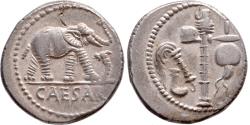
Julius Caesar “Elephant Denarius
The elephant represents the might of Caesar and his legions, trampling a snake which represents the enemy.
The Denarius in the Republic
- Expansion and Trade
- As Rome expanded its territory, the denarius became essential for trade and commerce. Its acceptance spread across the Mediterranean, facilitating economic interactions with various cultures.
- Merchants and traders came to rely on the denarius as a stable currency, further embedding it into daily transactions.
- Political Propaganda
- Coins were often used as tools for political propaganda. During the late Republic, prominent figures, such as Julius Caesar and Pompey, minted their own coins to promote their images and achievements, effectively using the denarius to influence public perception.
The Denarius in the Empire
- Widespread Use
- The denarius became the standard currency throughout the Roman Empire during the Pax Romana (27 BC – AD 180). Its stability contributed to a flourishing economy, allowing for extensive trade networks.
- Coins were often minted in provincial mints, which adapted designs to local tastes while retaining the essential features of the denarius.
-
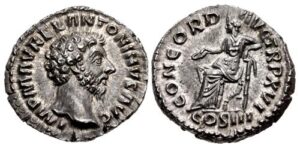
Marcus Aurelius Denarius – last emperor of the Pax Romana
- Changes in Composition
- Over time, the silver content of the denarius began to decline due to economic pressures, including military expenditures and inflation. By the 3rd century AD, emperors started debasing the coin, leading to a mix of silver and base metals.
- This debasement marked the beginning of a long decline in the denarius’s value, contributing to economic instability in the Empire.
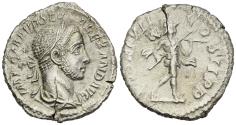
Denarius of Severus Alexander – debased silver
The Denarius’s Legacy
- Cultural Impact
- The denarius not only facilitated commerce but also served as a canvas for artistic expression. The designs reflect Roman artistry and the political narratives of the time, leaving a lasting cultural legacy.
- Its name has endured through history; the term “denarius” evolved into various modern currencies, including the Spanish “denario” and the Italian “denaro.”
- End of the Denarius
- By the late 3rd century AD, the denarius had largely fallen out of use as the Empire shifted towards different currency systems, including the antoninianus.
- The denarius remained a symbol of Rome’s economic prowess and cultural influence, even as it was replaced by new currencies.
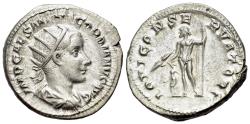
Antoninianus of Gordian II
Conclusion
The Roman denarius played a crucial role in the development of the Roman economy and society. From its inception as a standardized currency to its decline amid economic turmoil, the denarius reflects the complexities of Roman history. Today, it remains a powerful symbol of ancient Rome’s legacy in trade, governance, and culture, highlighting the importance of currency in shaping civilizations.
We at Ancient Artifacts have many ancient coins for sale at our physical store, on VCoins ( https://www.vcoins.com/ancient_artifacts__treasures), and www://BargainBinAncients.com

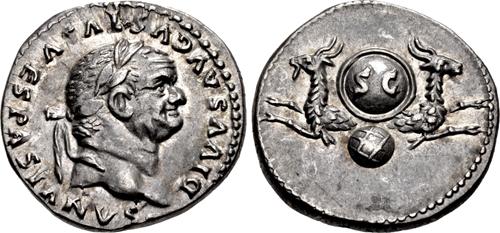


Comments are closed.